The combat debut of the Soviet dive bomber
Aircraft development: too little time
The 132 th speed bomber aviation regiment began to form 4 March 1940 in Kirovograd as part of the first large deployment of the Red Army air force. Most of the manning of the unit ended by May 15, and despite the fact that most of the personnel had just arrived from flight schools, the regiment as part of the 48 crew on the SB bombers was ready for combat during the day in simple weather conditions from medium altitudes. As is known, the war with Romania during the “liberation campaign” in Bessarabia and Northern Bukovina in the summer of 1940 did not happen, so the regiment continued to put together units and train personnel in calm conditions.
Total for October 28 1940 raid regiment was 2104 hours 30 mines (4030 landings), or, on average, 33 hours per crew. 298 bombings were carried out, of which 206 was performed (on average 4 per crew), and 325 aerial firing, of which 176 was performed (on average 3 on each navigator and radio operator).
By the beginning of 1941, the Moscow Aviation Plant No. 22 had accumulated around 200 diving bombers Ap 2, which, after the elimination of factory defects, had to go to the Air Force combat units. Soon, the production of this aircraft was stopped in favor of the Pe-2 bomber, and it was decided to deploy the Arkhangelsky aircraft as an "intermediate" machine for testing dive bombing before deploying the production of "pawns". For this purpose, in the border districts, the Moscow Military District and the Red Banner Baltic Fleet air force, several units were selected, which the first Soviet dive bombers received. In the Odessa Military District, the choice fell on the 132-th SBAP, and the regiment received 24 Ap-2 (one in February, 12 in March and 11 in May) in return for part of their SB.
From 14 May 1941, the regiment was deployed in summer camps at the Yekaterinovka airfield. By 22 June 1941, the 132 SBAP had 59 combat crews and 60 combat aircraft of three types: 23 Ap-2 (19 good), 32 SB (30 good) and 5 Pe-2 (all good). Art-2 exploited the 3-I and 4-I squadrons, 2-I and 5-I squadrons flew on the SS, and the personnel of the 1-th squadron began retraining on Pe-2.
The training and combat training of the regiment in the 1941 year was conducted rather mediocre even compared to the previous year: until 1 June, the regiment crews flew just 1102 hours 27 minutes (2393 landing). Against this background, retraining at Ap-2 was conducted quite intensively: in March the raid was 47 hours, in April 31 hours, in May 115 hours (total 363 landings). An 121 route flight (of which 12 was at night), 84 bombing (64 completed), 153 aerial cone shooting (113 completed) were performed.
However, the crews did not really start dive-bombing - only one such bombing was noted, however successful. Apparently, in this regard, the order for combat training of the district headquarters for June 1941 highlighted the order for the 3 and 4 squadrons of the regiment to work out dive bombing for June 10. Unfortunately, data on the air raid and combat training of the OdVO air force for June 1941 have not yet been found, but judging by subsequent events, this assignment was carried out, and at least part of the crews of the 3 and 4 squadrons for the 22 June 1941 years of dive bombing worked.
War: do what you must and come what may
The first day of the war for the OdVO 45-th SADO, which was part of the second echelon of the Air Force, which included the 132-th SBAP, was rather calm. There were no Luftwaffe raids on airfields in the KiNohrad region of 22 June, but the regiments of the division, which were in the process of forming and retraining for a new materiel, did not receive combat orders. However, the OdVO command that was in a difficult situation because of the small number of combat-ready parts of strike aviation, which became the 9 Army command, decided to redeploy the 132 SBAP to Odessa to strengthen its strike force.
The order was received around 17: 00 on the first day of the war, and by the evening of June 23 the regiment was operational with crews (29 SB and 16 АR-2) relocated to the Razdelnaya airfield 60 km north-west of Odessa, and by evening was fully prepared for fighting. On the remaining seven Ap-2 technical personnel in Yekaterinovka, they eliminated numerous design and manufacturing flaws, and these machines, as they were ready, poured into the combat strength of the regiment.
In the morning of June 24, the regiment began to perform combat missions primarily for the destruction of enemy crossings and troops in the area of Skulyany-Iasi. Actually, in the Skulyany region, the center of the German 11 Army was built, which, with its central 54 Army Corps 23 in June, forced the Prut border river and seized a bridgehead on the eastern coast, starting to advance into Soviet territory.
Aircraft 132-th SBAP were to strengthen the parts of 20-th SAD, which began to act on the enemy troops in the morning of the second day of the war, performing 77 sorties. 24 June, the work of Soviet aviation reached its apogee - the total strike aircraft carried out more than 200 combat missions that day, of which 39 fell on the 132 SBAP (15 SB and 24 Ap-2).
The initiative was made by the Nine Ar-2 of the 4th Squadron (Major Commander N. A. Zobov), who at 11 am bombed with dive links in a cluster of enemy equipment in the Skulyany area. Crews searched tank columns on the Skulyany – Falesti road, but targets identified as four groups of tanks of 6–8 each were found only on the outskirts of Skulyan, 100–200 meters from the road to Falesti.
According to the reports of the pilots, the entry into the dive was carried out at an altitude of 3000 meters, the output - at 1500. Total 32 bomb FAB-100 was dropped (one crew did not drop the bomb). According to crew reports, the enemy’s 14 tanks and 100 manned infantry were destroyed. In the target area, the group was attacked by an unidentified enemy fighter link, but casualties and damage were avoided.
The 3 squadron of the regiment, led by the commander captain M. A. Makarin, found targets on the Romanian coast near the village of Kyrpitsy in 12: 05. Crews have determined that this is a large group of tanks disguised along the road to Skulyany, then in 12: 10 nine Ap-2 dive links dropped 36 FAB-100. Despite the anti-aircraft artillery fire and the attack of a single fighter, the aircraft received no damage, and the crews noted the destruction of 10 tanks and 150 enemy soldiers.
Major Nikolai Zobov, commander of the 4 Squadron of the 132 SBAP, (left, in the photo with the rank of captain) and 3 Squadron Commander of the 132 SBAP, captain Mikhail Aleksandrovich Makarin (right)
The same 3 Squadron distinguished itself in the second half of the day, becoming the only regimental unit that carried out the 24 on June 2 second sortie. In 18: 45, the six Ar-2 six attacked a motorized convoy (again identified as tanks) with a dive just 5 kilometers from Falesti, on the Skulyany-Falesti road. The victims of 24 FAB-100 allegedly became 8 tanks and 50 enemy soldiers. In the target area, the crews noted heavy anti-aircraft fire.
By the morning of June 25, the position of the Soviet troops had not improved. It was not possible to dump the Germans into the river, so the 4-I squadron of the 132-th SBAP was ordered to destroy the crossings in the Skulyan area. In 06: 15, the six Ar-2, guided by Major N. A. Zobov, dropped FNB-23 100 from a dive. According to the report of the komeska, the crews made direct hits and destroyed the crossing. Anti-aircraft artillery opened fire after the Soviet aircraft left the peak and did not cause any damage, and a couple of fighters identified as “SET-15” suffered a failure - apparently, they meant the Romanian R.11f. All Art-2 returned to their airfield without loss.
However, military success is changeable, and for the beginning of the Soviet pilots the weather let down. After 09: 00, the target area tightened the clouds, and the 10 six Ap 05 2 squadron, which reached the target area in 3, was forced to reset 24 FAB-100 from horizontal flight from 3000 meters altitude, without seeing the target. Naturally, the crews did not observe the results of the bombing, but the anti-aircraft guns and fighters did not annoy them either.
The re-launch of the eight 4 squadron in 11: 50 was a failure. Actually, everything went wrong already at the start, when Lieutenant Alyabyev was taking off from the holder of an airplane taking off from the holder of the bomb, and the squib was triggered. As a result, the plane received heavy damage and made a forced landing. Further more: the weather in the target area became even worse, because of the continuous downpour, the squadron slipped far to the west of the target and restored orientation only over Iasi. When attempting to turn on the target, the group was attacked by the six Bf 109. Crews urgently dropped bombs and tried to escape, but German pilots showed perseverance and enviable skill: despite the clouds and heavy rain, they pursued Soviet bombers about 120 kilometers, from Yassy to Dniester, constantly attacking, although Soviet aircraft periodically entered the clouds and flew at maximum speed. As a result, only the planes of Major N. A. Zobov and Lieutenant V. P. Antonenko returned to their airfield, while the remaining five Ap 2s were shot down. Fortunately, from the 15 members of the downed crews, 10 people soon returned to the regiment.
Feldwebel Rudolf Schmidt shows marks of victories on the steering wheel of his fighter. 12-th, 13-th and 14-th in a row of victory declared over the AR-2 4-th squadron of 132-SBAP in the battle 25 June 1941 year
The successful battle was conducted by the six Bf 109E pilots from 5./JG 77, who took off to 11: 00 in Berlin time. According to Jochen Prine, in 11: 42 – 12: 13 they declared 10 victories over the Martin Bombers, with three victories each counted against Chief Lieutenant Rott (Fl. Rudolf) Schmidt), and Corporal Marshausen (Gefr. Günther Marschhausen) and Unter Officer Kindlein (Uffz. Kindlein) - two each.
The Soviet crews had an active opposition: according to the report of the shooters of the returned aircraft, one of the attackers was shot down by the flagship radio-gunner jr. sergeant Peter Aleksandrovich Gorbachev. According to German data, on this day the aircraft of the “hero of the day” Feldwebel Schmidt was lost from anti-aircraft artillery fire (Bf 109E-4 W.Nr. 5365). With high probability we can say that he was shot down by the crew of the Martin-Bomber, which he stated in 12: 07. In fact, the plane of Major N. A. Zobov received three holes.
Bf 109E fighters from 5./JG 77, summer 1941 of the year (artist Igor Zlobin)
Actually, this battle was not something out of the ordinary: on the eve of the III./JG 77 fighters, the SB group of the 45 SBAP was “thinned out” with approximately the same result. It was not the crews who fought back and managed to inflict damage to the enemy, but the command of the division and the 9 Army's air force, it was worth asking the cause of the losses. They could not organize a cover for the bombers, although it was not difficult to guess that the intensive use of Soviet strike aircraft over the Skulyany area — Falesti would force the enemy to cover him with fighters. Looking a little further, we note that the losses of the 4 squadron of the 132 SBAP influenced the actions of the command, and the next day the 132 SBAP groups began to cover the 20-fighters of the SAD. Alas, due to the fact that the interaction was not established, it was not possible to properly accomplish this task, which predetermined the heavy losses of the parts of 45 June 26.
The commanders of the 3 and 4 squadrons of the 132 SBAP made correct conclusions from the losses of June 25. In the subsequent departures, both units suffered minimal combat losses: a total of nine Ap-2 on 317 combat sorties were lost in the air before being withdrawn to the rear, and four more vehicles were written off due to various damage. At the same time, from June 26 to 18, the regiment lost only three Ap 2, and one more machine did not return from the reconnaissance flight. She acted in isolation from the main regimental forces in the interests of the 9 Army Air Force headquarters, which was given a pair of Ap 2 (the number of sorties made by these crews was not indicated in the regiment’s documents). One 4 squadron of July 12 was mistakenly shot down by its MiG-3 fighter. Thus, on 317 combat sorties there are eight downed by the enemy Ar-2, which gives one loss for approximately 40 sorties - an excellent indicator for the summer of 1941 of the year!
The intensity of the hostilities of the dive bombers of the 132 SBAP can be estimated by the following indicators. Operating from Razdelnaya airfield from 24 to June 28, the 3-I and 4-I squadron of the regiment carried out 67 combat sorties, of which the crews were bombed from a dive flight in 51. Losses brought down amounted to six Ap-2. From the Pechera airfield (10 km south-west of Nemirov), the regiment operated from 2 to 9 in July against the forces of the German 11 Army attacking Mogilev-Podolsky, and 10 – 11 in July, deployed on 180 °, bombed the 3-ro-ro unit of ro-ro XMX-1 July, rotated into 3 °, bombed the 4-ro-ro unit of the Army, attacked 142-Podolsky. 75-th tank group, advancing from Zhytomyr to Kiev. During this time, the 2 and XNUMX squadrons made XNUMX combat sorties, of which XNUMX crews were bombed from a dive. Losses brought down amounted to only two Ap-XNUMX.
The air battle of 10 July, which occurred during the flight for bombing of German tanks and motorized infantry, advancing along the Zhytomyr-Kiev highway, was illustrative. In the area of Rozhev 12, the Ar-2 was dropped on the enemy from a diving 72 FAB-100, the crews reported on the destruction of 10 tanks, two armored vehicles and 11 vehicles. The enemy had a serious opposition: first, the Soviet dive bombers were fired upon with intense fire by anti-aircraft guns, and then they were attacked by the four Bf 109. Despite the fact that a single Ar-2 crashed a motor with a direct hit by an anti-aircraft projectile, the Soviet crews did not become confused and almost all attacks were repelled by concentrated fire from radio-gunners.
The most experienced staff leader of the I./JG 3 link, led by group commander Hauptmann Hans von Hahn (Hptm. Hans von Hahn) and Ober-Lieutenant Buchholz (Oblt. Max Buchholz), not only failed to crush the group, but even to upset it, and only their prey was brought down Ar-2 Art. Lieutenant V.V. Melnikov from the 4 Squadron. Even a padded anti-aircraft gun, the plane returned to the airfield, where it made an emergency landing on the stomach (due to the damage to the hydraulic system, the landing gear did not come out). Interestingly, both the German ace said on another victory (23-I and 19-I, respectively), but the Soviet shooters were not particularly shy: the results of the battle is already known to us ml. Sergeant P. A. Gorbachev and Art. sergeant V.S. Graidzler was credited with one downed Bf 109, although in reality no German fighter received any damage. Nevertheless, it should be noted that in two weeks of fighting the skill of the crews of the Ap 2 crews reached a high level, and intercepting them was undoubtedly a difficult task even for the best Luftwaffe aces.
Commander I./JG 3 Hauptmann Hans von Hahn accepts congratulations on the 24 air victory. 12 July 1941 of the year, Polonnoe airfield. The 23-I mark of victory is drawn on the steering wheel after the battle with the 2-132 Art-X SBUM July July
Redeployed on the night of 11 July to the Zyatkovtsy airfield near the town of Gaisin (50 km west of Umani), the 132 th regiment began working on 12 of the 48 th motorized corps of the 1 th tank group advancing on Berdichev. A total of 18 sorties were flown before 77 July, mainly on targets in the Lyubar, Polonnoe, Berdichev and Kazatin areas. Unfortunately, for this period, generalized data on the number of dive bombings in the regiment’s combat magazine are not available.
Actually, already on July 16 the main part of the regiment departed from the combat area for re-formation into rear, and the remaining group led by the commander of the 5 squadron captain Kasyanov (nine AP-2 and three SB) entered the 6 Army's command . This group was defeated for only two days, and on July 19 was already deployed to Kirovograd, where, transferring aircraft to other parts of the Air Force of the Southern Front, departed after the regiment to the rear. Actually, this event allowed us to get an idea of how Art 2 132 SBAP looked like: at least three cars were subsequently left at the Kirovograd airfield because of faults and hit the photographic lenses of German soldiers.
The successful combat operations and the small losses of the squadrons of the Ar-2 are especially well visible against the background of their colleagues: the regiment command, 1, 2 and 5-squadron flying on the SS, completed only 195 combat missions before leaving the regiment, having lost at this is in aerial combat and from a bomber 22 anti-aircraft artillery fire, three more were written off as a result of combat damage, and three were destroyed in accidents and disasters due to the fault of the personnel. It is not surprising that after the regiment was reorganized into a two-squadron, it was the commanders of the units armed with Ar-2 who became the commanders of the newly formed squadrons. In addition, Captain Makarin and Major Zobov were awarded the Order of the Red Star for their personal heroism.
Aircraft Art-2, owned 132-SBAP left at the airport Kirovograd due to faults
In the documents of the regiment and division, the 3 squadron of the 132 SBAP and its commander, captain M. A. Makarin, are particularly noted. The squadron maintained combat capability throughout the war and suffered minimal combat losses — two Ap-2, one of which was hit by 27 June anti-aircraft guns, and the second on July 4 by Messerschmitts from 7./JG 77. The commander himself performed 24 sorties in less than a month, which is undoubtedly an outstanding result.
Further fate was favorable to him: performing 1941 – 1942 on the Kalinin front in winter. More 32 combat departure, Makarin was awarded the Order of the Red Banner, received the rank of major and was soon appointed commander of the regiment in the Far East. Mikhail Alexandrovich participated in the hostilities against Japan as the commander of the 36-BAP, then served in various positions, went to the reserve in the rank of colonel.
The commander of the 4 Squadron, Major N. A. Zobov, achieved even greater results - during the same period, a brave commander and pilot carried out 29 combat sorties. In addition, it should be noted that it was he who formally belonged to the primacy in dive bombing in combat conditions. Major Zobov was an experienced commander. He participated in hostilities in Republican Spain, for which in 1937 he was awarded the Order of the Red Banner. Unfortunately, his fate was tragic: Nikolai Alexandrovich did not return from the February 21 departure, 1942, on the Kalinin Front. Before his death, he managed to perform more 36 sorties, for which he was awarded the second Order of the Red Star.
Here's how the command of the 132 Air Division was evaluated by the 45 SBAP:
“The regiment basically conducted all its combat work on ground troops and mainly on enemy motor-parts in movement along roads and in places of their concentration, as well as on crossings to r. Prut in the district Skulyany - Stefaneshty and on the river. Dniester in the district of Kamenetz-Podolsky. According to the reports of the crews, for the most part, the gaps lay in the district of targets and on the target itself. Our ground units defending r. Prut in the district of Stefaneshty, witnessed great losses of the enemy’s motor-mechanic parts from the bombardments. The regiment from ground units was grateful for the successful assistance. "
Despite the obvious success of using the Red Army's first serial air bomber in the 132 SBAP, I would like to note its significant shortcomings that reduce the effectiveness of dive strikes: the crews used almost exclusively FAB-100 bombs, and, as a rule, when loading from a dive, the combat load made only four such bombs. Large-caliber ammunition was used in a few cases, so the declared successes, especially in terms of destroyed crossings, seem rather dubious.
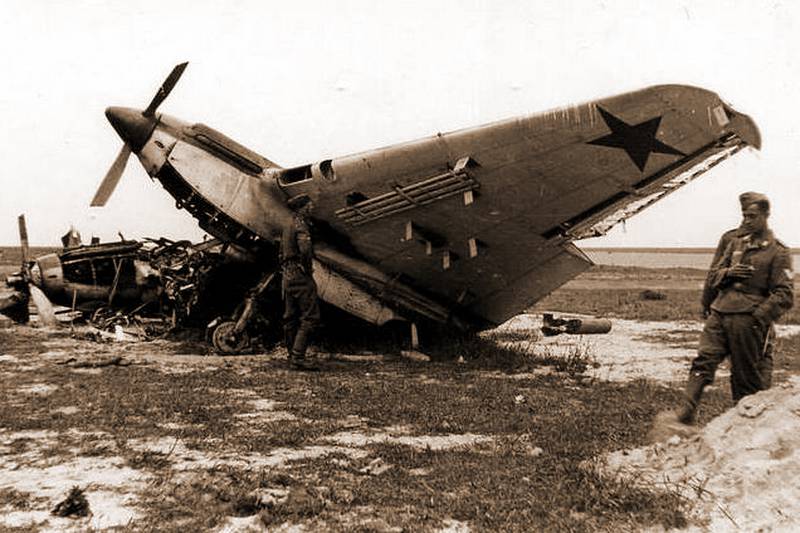
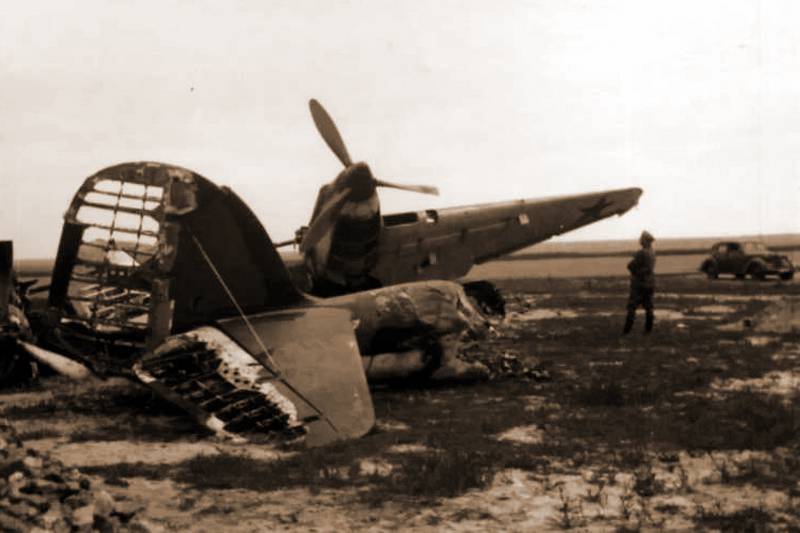
Bomber Ar-2, owned by 132-i SBAP, destroyed at the airport Kirovograd
In addition, for more effective use of dive-bombers on enemy troops, observer-aircraft planners were needed, who, being in advanced ground units, would have corrected Ap-2 strikes. They were simply not there at that time, so the bulk of the strikes fell on the enemy’s rear, at best, on the forward detachments of the enemy’s advance convoys, and the German troops leading the battle directly on the front lines were practically not hit. This, of course, did not help much the defending or counterattacking units of the Red Army, which remained without real support from aviation.
FAB-100 aerial bomb suspension in the Ap X-NUMX bomb bay - you can clearly see the PB-2 bomb-holder device (photo from the Ap-3 dive bomb testing report)
Another annoying omission was that the extensive experience of diving into 132's SBAP was not analyzed or used to train other units armed with dive bombers. It is no longer a secret that most of the regiments equipped with Pe-2 dive-bombers, even in 1942 – 1943, did not use these aircraft for their intended purpose and did not bomb with dives.
Art-2 - Unused Opportunity
As an afterword, several factors should be cited which, in the author's opinion, caused such a rapid mastery of a new aircraft by personnel, including the use of its capabilities as a dive bomber.
The first is the origin of the Ap-2 from the serial aircraft of the SB, with which it had similar flight characteristics. The Ap-2 was simple in piloting techniques, including taking off and landing, and therefore available for training even the poorly trained young flight personnel of the Red Army Air Force, which was in the best way different from the strict and subordinate to the Pe-2 pilot. Considering that the majority of cadets of bomber aviation in 1939 – 1941 were graduated from flight schools on SS or CSS, retraining on АР-2 turned into a simple formality.
In the design of the Ap-2, one more feature was provided: this plane initially received a special bomb-holder PB-3, which allowed dropping bombs from a dive not only from the external suspension, but also from the bomb bay. PB-3 design allows hanging on it following bombs combination: 2 × FAB-50, or 2 × FAB-100, or 2 × FAB-250, or 2 × Brabo-220, or 2 × BetAB-150, or 1 × FAB -500. Such a suspension did not degrade the aerodynamics and maintained the maximum horizontal speed, unlike the Pe-2, which did not have such a device, and the pawn could only drop bombs from a dive with an external suspension.
From 15 February to 18 in March 1941, an experienced squadron of dive bombers from the Air Force’s air force weapons test site tested the dive bombing from the dive Ar-2, and a detailed instruction on the training of personnel, which was released, and the most detailed instruction for personnel training was released. rearmed on a new pikirovschik. 3000, 2500 and 2000 meters at input speeds from 270 to 315 km / h were recognized as the main entry heights in a dive, the recommended dive angles are 60, 70 and 80 °. There is no reason to doubt that it was precisely as a result of well-thought-out training based on theoretical and practical data that the personnel of the combatant units could in the shortest possible time master the technique of diving bombing. This is confirmed by the documents of the 132 SBAP, according to which the dive was entered at heights of 3000 – 2500 – 2000 meters (minimum input height), which fully complies with these instructions.
It remains only to regret that the release of a very successful aircraft, the first Soviet dive bomber Ap 2, was limited to two hundred copies.
Unlike Art-2, the subsequent fate of the 132 SBAP was quite successful: in 1942, the regimental personnel was one of the first to master the newest Tu-2 bombers, went through the entire Great Patriotic War, and in 1945, for distinguishing battles for capturing the capital Nazi Germany received the honorary title "Berlin".
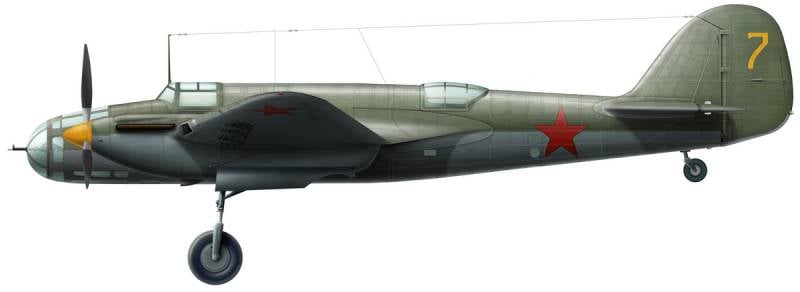
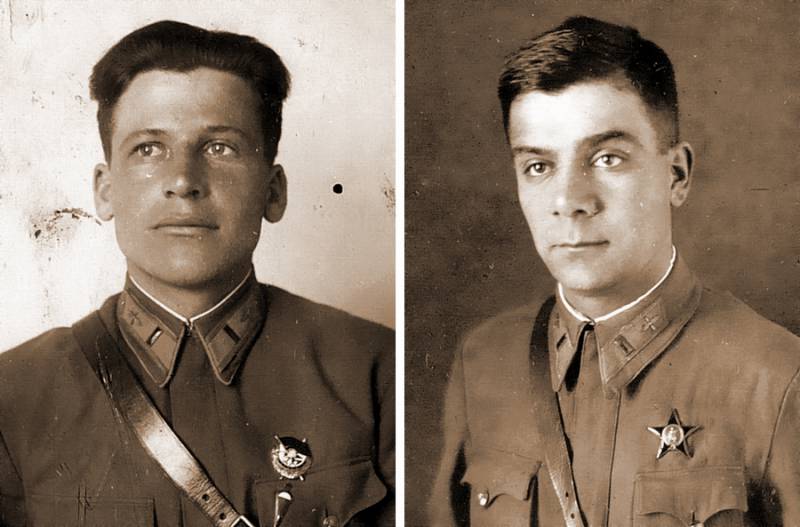
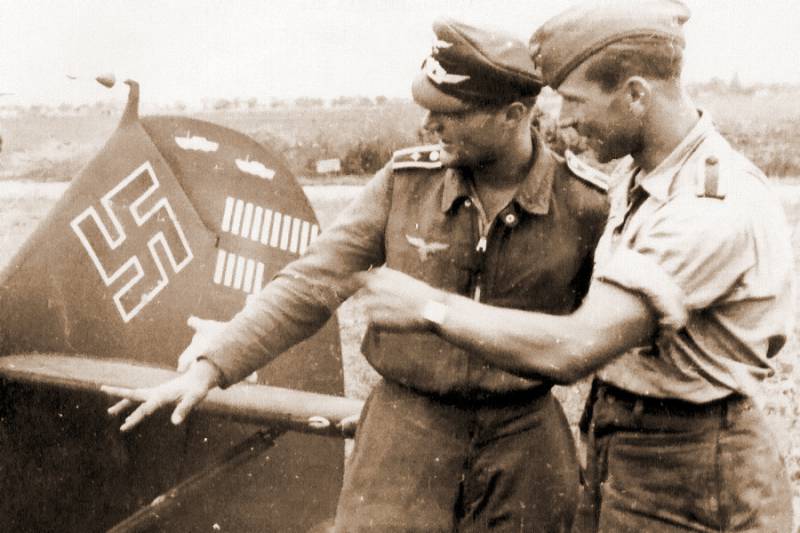


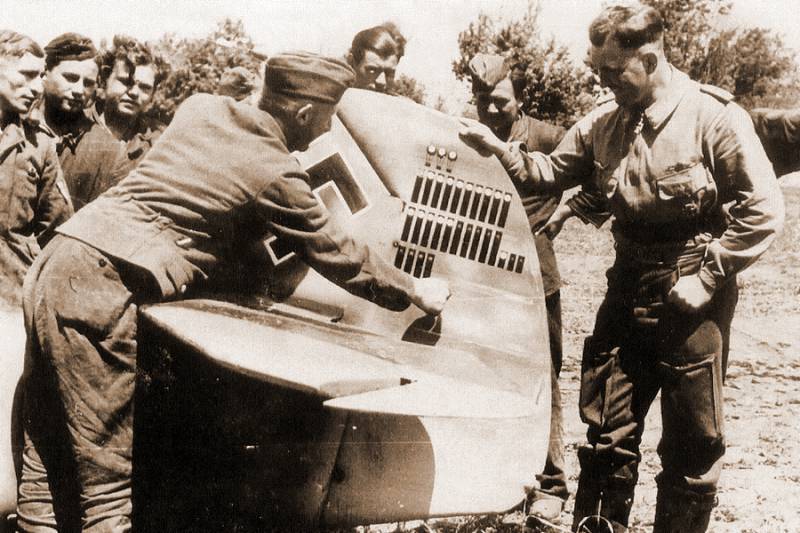
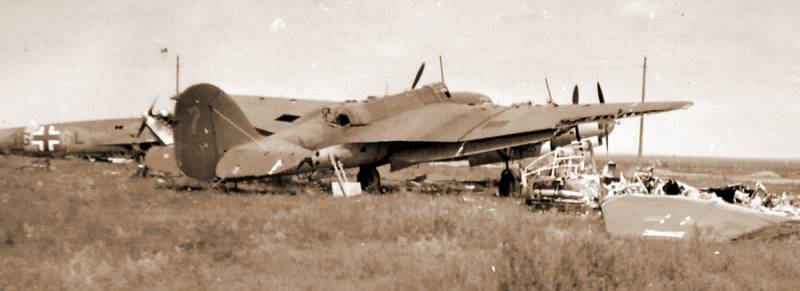
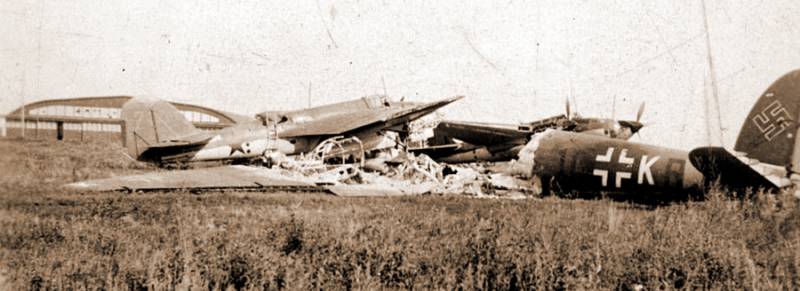
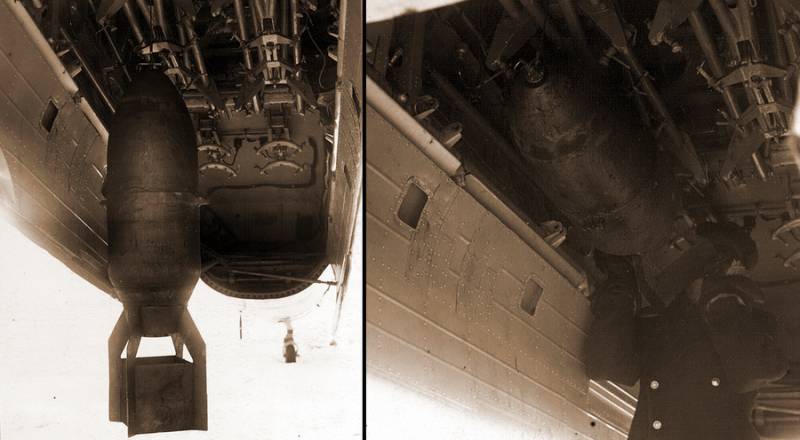
Information